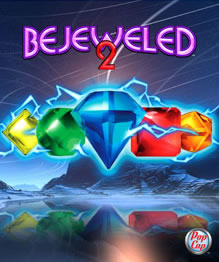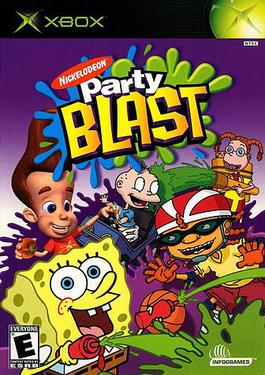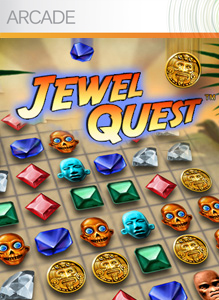
Sonic & Knuckles is a 1994 platform game developed and published by Sega. Players control Sonic the Hedgehog and Knuckles the Echidna in their quests to save Angel Island; Sonic tries to stop Doctor Robotnik from re-launching his orbital weapon, the Death Egg, while Knuckles scuffles with Robotnik's minion, EggRobo. Like previous Sonic games, players traverse side-scrolling levels at high speeds while collecting rings and defeating enemies.

Paperboy is an arcade action game developed and published by Atari Games, and released in 1985. The player takes the role of a paperboy who delivers a fictional newspaper called The Daily Sun along a street on his bicycle. The arcade version of the game featured bike handlebars as the controller.

Spoof is a strategy game, typically played as a gambling game, often in bars and pubs where the loser buys the other participants a round of drinks. The exact origin of the game is unknown, but one scholarly paper addressed it, and more general n-coin games, in 1959. It is an example of a zero-sum game. The version with three coins is sometimes known under the name Three Coin.

Lego Star Wars: The Video Game is a 2005 Lego-themed action-adventure video game based on the Lego Star Wars line of construction toys, and the first installment in the Lego video game franchise developed by Traveller's Tales, which would develop all future Lego titles from that point on. It was first released on 29 March 2005, and is a video game adaptation of the Star Wars prequel trilogy: The Phantom Menace, Attack of the Clones and Revenge of the Sith, with a bonus level from A New Hope.

Every Extend is series of puzzle shoot 'em up video games primarily developed by Q Entertainment. The series began with a 2004 freeware game of the same name for Windows, which was a personal project by Kanta Matsuhisa under the "Omega" pseudonym. Q Entertainment discovered the game online and approached Matshisa to develop a remix version. The remix version was developed for the PlayStation Portable and was released in 2006, titled Every Extend Extra. In 2007, Q Entertainment developed and released a sequel on the Xbox 360 titled Every Extend Extra Extreme.

Zuma is a 2003 tile-matching puzzle video game developed by Oberon Media and published by PopCap Games. It was released for a number of platforms, including PDAs, mobile phones, and the iPod.

Bejeweled 2 is a tile-matching puzzle video game developed and published by PopCap Games. Released as a sequel to Bejeweled, Bejeweled 2 introduces new game mechanics, such as Special Gems and extra game modes, along with new visuals and sounds.

Nickelodeon Party Blast is a party video game developed by English developer Data Design Interactive and published by Infogrames. Party Blast was released for Xbox, Windows, and GameCube in 2002. A PlayStation 2 version of the game was planned to be released, but it was cancelled for unknown reasons, though leftovers, such as a model of a DualShock 2 controller, can still be found in all versions of the game’s files. The game features characters from Nicktoons, including SpongeBob SquarePants, Rugrats, The Adventures of Jimmy Neutron: Boy Genius, Invader Zim, Rocket Power, and The Wild Thornberrys, with CatDog as the hosts.

Jewel Quest is a tile-matching puzzle video game created and published by iWin. First released for Windows, it has been redeveloped for Symbian S60, the Nintendo DS, the Xbox 360's Xbox Live Arcade and other platforms. iWin also released a series of sequels and spin-off games.

The Hobbit is a 2003 action-adventure game developed by Inevitable Entertainment for the GameCube, PlayStation 2 and Xbox, by The Fizz Factor for Microsoft Windows, and by Saffire for the Game Boy Advance. It was published by Vivendi Universal Games subsidiary Sierra Entertainment.
Luxor is a game and series of tile-matching action puzzle video games, developed and published by MumboJumbo, with the initial release in 2005. The first sequel to this game was Luxor: Amun Rising, which was released in 2005 followed by Luxor 2, which was released in 2006 and included new gameplay, levels and bonus. After that came Luxor 3, which featured seven gameplay modes and improved graphics. It was followed by Luxor: Quest for the Afterlife.

Yaris is a Toyota-licensed racing advergame based on the line of Yaris subcompact cars. It was developed for the Xbox 360 and distributed for free on Xbox Live Arcade. The game was released on October 10, 2007, but was later delisted from the Xbox Live Marketplace in November 2008.

Luxor 3 is an action-puzzle computer game released by MumboJumbo. It is a sequel to Luxor and Luxor 2. As with the other Luxor games, it maintains an Egyptian theme and revolves around Egyptian deities involving a main gameplay goal of removing spheres in various lines of spheres on a set track by exploding groups of three or more spheres.

Luxor: Quest for the Afterlife is the sequel to Luxor, Luxor 2, and Luxor 3, and has features such as: Battle mode, Six lands to venture through rather than just Egypt, and Stories narrated by Queen Nefertiti. The game was developed by MumboJumbo LLC.

Gyromancer is a puzzle and role-playing video game developed by PopCap Games in collaboration with Square Enix. The player moves through a map of an enchanted forest, battling monsters using their own summoned monsters through a puzzle-game battle based on PopCap's Bejeweled Twist. In these battles, the player rotates groups of four in a grid of gems to line up three or more jewels of the same color; when enough lines have been created damage is dealt to the enemy. Between battles, a story is told through a series of cutscenes, while the player and the summoned monsters gain experience and power using role-playing elements.

Bejeweled Blitz is a puzzle video game, originally a Facebook application which was developed and published by PopCap Games; since 2011 Electronic Arts took over the publishing and distribution duty after EA acquired PopCap. It developed into a downloadable game, based on the then-in-development Bejeweled 3 engine, due to popularity of the differences from Bejeweled 2 and its new graphics. As with the Bejeweled series, Bejeweled Blitz is based on the Shariki game mechanic. It is the fourth game of the Bejeweled franchise and initially was available on iOS as part of the Bejeweled 2 iOS application, later on with the standalone iOS application. The game was then released on Android devices.
In video gaming, an achievement is a meta-goal defined outside a game's parameters, a digital reward that signifies a player’s mastery of a specific task or challenge within a video game. Unlike the in-game systems of quests, tasks, and/or levels that usually define the goals of a video game and have a direct effect on further gameplay, the management of achievements usually takes place outside the confines of the game environment and architecture. Meeting the fulfillment conditions, and receiving recognition of fulfillment by the game, is referred to as unlocking the achievement.

Luxor Evolved is a tile-matching video game released in 2012 by MumboJumbo. Similarly to what PopCap Games had done when putting out a sequel to Zuma three years earlier, Luxor Evolved was a complete visual and design refresh of the Luxor series, taking the previous titles' staple Ancient Egypt thematics and combining them with a retro video game aesthetic, aiming to lure players in with eye-catching visual detail. This title is the last fully original game of the series.

Super Dungeon Bros is a 2016 roguelike video game developed by React Games and published by Wired Productions. A multiplayer-focused title, the game was released worldwide in November 2016.
Teamfight Tactics (TFT) is an auto battler game developed and published by Riot Games. The game is a spinoff of League of Legends and is based on Dota Auto Chess, where players compete online against seven other opponents by building a team to be the last one standing. The game released as a League of Legends game mode for Windows and macOS in June 2019 and as a standalone game for Android and iOS in March 2020, featuring cross-platform play between them.


















